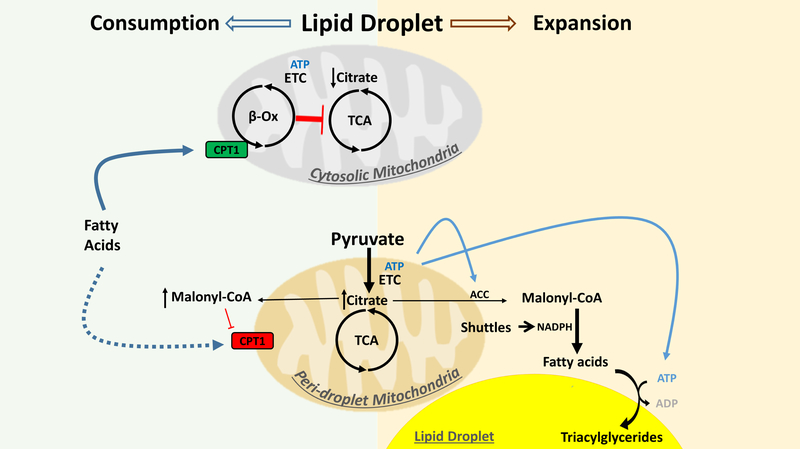Figure 2.
Scheme of metabolic specialization model of CM and PDM. Metabolic specialization in PDM and CM: Mitochondria support lipogenesis with malonyl-CoA, a metabolite that inhibits FA oxidation by the mitochondria. Separation of mitochondria into PDM and CM may allow for both fatty acid oxidation and lipid synthesis to occur in the same cell at the same time. High pyruvate oxidation capacity in PDM may lead to increased malonyl-CoA pools. Malonyl-CoA can act as a negative regulator of Carnitine palmitoyltransferase I (CPT1) and thereby block fatty acid entry into mitochondria. In addition, malonyl-CoA is a building block for de novo lipid synthesis. Higher ATP synthesis capacity in PDM supports fatty acid esterification into triacylglycerides for lipid droplet expansion. Lower pyruvate oxidation in CM leads to reduced citrate and malonyl-CoA pools, which allow CPT1 to import fatty acids for β-oxidation (β-Ox). Increased β-oxidation products inhibit PDH and several steps of the tricarboxylic acid (TCA) cycle (for details see Figure S1). ETC: Electron transport system, ACC: acetyl-CoA carboxylase.

